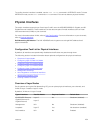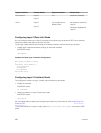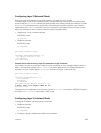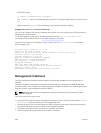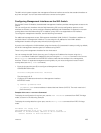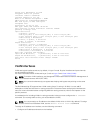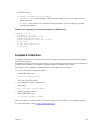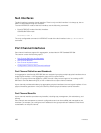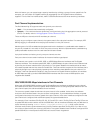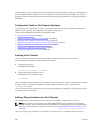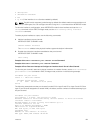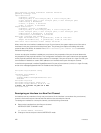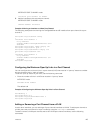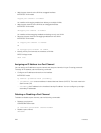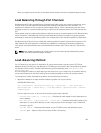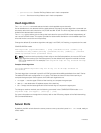
With this feature, you can create larger-capacity interfaces by utilizing a group of lower-speed links. For
example, you can build a 40-Gigabit interface by aggregating four 10-Gigabit Ethernet interfaces
together. If one of the five interfaces fails, traffic is redistributed across the three remaining interfaces.
Port Channel Implementation
The Dell Networking OS supports static and dynamic port channels.
• Static — Port channels that are statically configured.
• Dynamic — Port channels that are dynamically configured using the link aggregation control protocol
(LACP). For details, refer to Link Aggregation Control Protocol (LACP).
There are 128 port-channels with 16 members per channel.
As soon as you configure a port channel, the system treats it like a physical interface. For example, IEEE
802.1Q tagging is maintained while the physical interface is in the port channel.
Member ports of a LAG are added and programmed into the hardware in a predictable order based on
the port ID, instead of in the order in which the ports come up. With this implementation, load balancing
yields predictable results across line card resets and chassis reloads.
A physical interface can belong to only one port channel at a time.
Each port channel must contain interfaces of the same interface type/speed.
Port channels can contain a mix of 100, 1000, or 10000 Mbps Ethernet interfaces and TenGigabit
Ethernet interfaces. The interface speed (100, 1000, or 10000 Mbps) the port channel uses is determined
by the first port channel member that is physically up. The system disables the interfaces that do match
the interface speed that the first channel member sets. That first interface may be the first interface that is
physically brought up or was physically operating when interfaces were added to the port channel. For
example, if the first operational interface in the port channel is a Gigabit Ethernet interface, all interfaces
at 1000 Mbps are kept up, and all 100/1000/10000 interfaces that are not set to 1000 speed or auto
negotiate are disabled.
100/1000/10000 Mbps Interfaces in Port Channels
When both 100/1000/10000 interfaces and TenGigabitEthernet interfaces are added to a port channel,
the interfaces must share a common speed. When interfaces have a configured speed different from the
port channel speed, the software disables those interfaces.
The common speed is determined when the port channel is first enabled. At that time, the software
checks the first interface listed in the port channel configuration. If you enabled that interface, its speed
configuration becomes the common speed of the port channel. If the other interfaces configured in that
port channel are configured with a different speed, the system disables them.
For example, if four interfaces (TenGig 0/0, 0/1, 0/2, and 0/3) in which TenGig 0/0 and TenGig 0/3 are set
to speed 100 Mb/s and the others are set to 10000 Mb/s, with all interfaces enabled, and you add them to
a port channel by entering channel-member tengigabitethernet 0/0-3 while in port channel
interface mode, and the system determines if the first interface specified (TenGig 0/0) is up. After it is up,
the common speed of the port channel is 100 Mb/s. The system disables those interfaces configured with
speed 1000 Mb/s or whose speed is 1000 Mb/s as a result of auto-negotiation.
Interfaces
409



